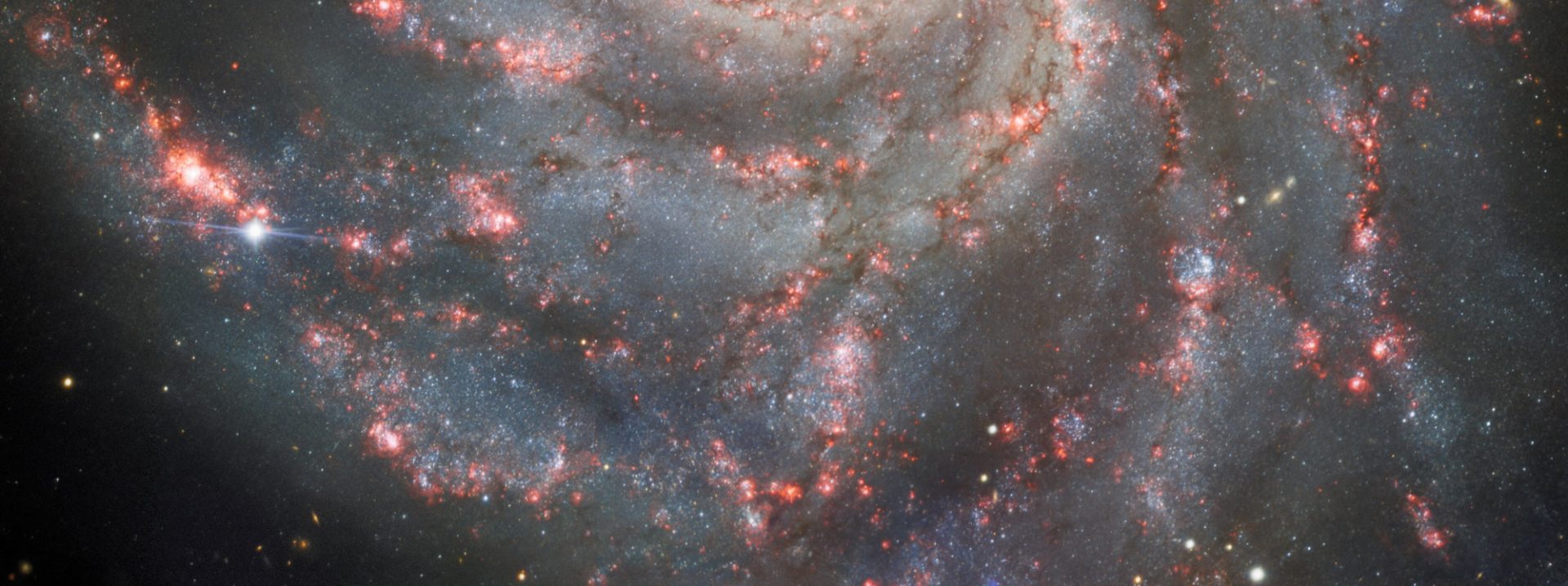POSSIBLE SUPERNOVA IN PGC 59251
Zhangwei Jin(Ningbo, Zhejiang, China) and Xing Gao (Urumqi, Xinjiang, China), report the discovery of a possible supernova (mag approximately 18.6) on two 40-s survey images (limiting mag about 19.5)taken by Xing Gao in Xingming Observation Sky Survey(C42) around Mar.15.95301 and 16.95425 UT,2013. using an unfilted CCD ( + Celestron C14 Schmidt-Cassegrain telescope D=350-mm @f/6.9 ).the new object approximately located at R.A. =15h 54m 56s.68 Decl.=+43°03’07”.7(equinox 2000.0). Which is about 22.8″ west and 32.3″ south of the center of the PGC 59251.
Nothing is visible at this position on archival images taken on Feb.26,2013. (limiting mag 19.3) or the DSS(POSS2/UKSTU Red) from Apr. 19,1991(limiting mag about 19.8)
NET UCAC-3
XM43ZJ C2013 03 15.95301 16 54 56.68 +43 03 07.7 18.6 V C42
XM43ZJ C2013 03 16.95425 16 54 56.71 +43 03 07.1 18.6 V C42
All images can be seen from: http://www.xjltp.com/XOSS/XM43ZJ/XM43ZJ.htm
C42,Xingming Observatory, Mt. Nanshan. Observers Z.Jin, X.Gao ,Measurers Z.Jin 0.35-m f/6.9 Schmidt-Cassegrain telescope and CCD.
Spectroscopic Classification of Optical Transients with APO 3.5m
ATel #4896; J. L. Prieto (Princeton)
on 19 Mar 2013; 03:07 UT
Credential Certification: Jose L. Prieto (jose@obs.carnegiescience.edu)
Subjects: Optical, Supernovae, Transient
We report spectroscopic observations of three optical transients: SNhunt175 (CRTS discovery), CSS130317:141506+270848 (CRTS discovery), and PSN J16545668+4303077 (Jin & Gao discovery, reported in CBAT TOCP). The spectra (range 350-960nm; res. 0.8nm) were obtained UT Mar. 18 with DIS mounted on the APO 3.5-m telescope. We used SNID (Blondin & Tonry 2007, ApJ, 1024, 666) to aid classification, phase, and redshift determination. SNhunt175 is a normal Type Ia SN around maximum light. After correcting for the recession velocity of its host galaxy (NGC 5910; z=040878 via NED), we measure a Si II (635.5nm) velocity of -11500 km/s. CSS130317:141506+270848 is a Type IIn SN with strong H-alpha and H-beta lines at redshift z=0.125, most similar to SN 1998S and SN 1997cy at late times. Its current magnitude (and redshift) imply a luminous event with MV ~ -20 mag. PSN J16545668+4303077 has the spectrum of a Type II SN a couple of weeks after explosion, showing strong and broad Balmer P-Cygni features and Fe II lines.
